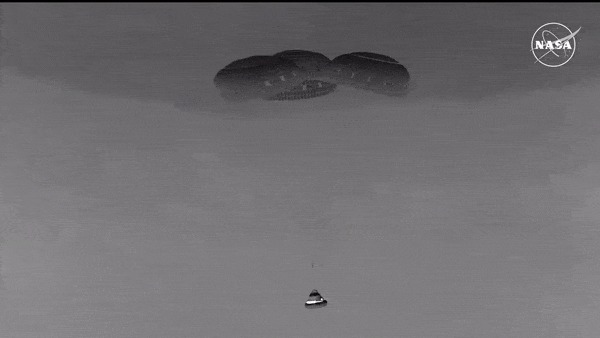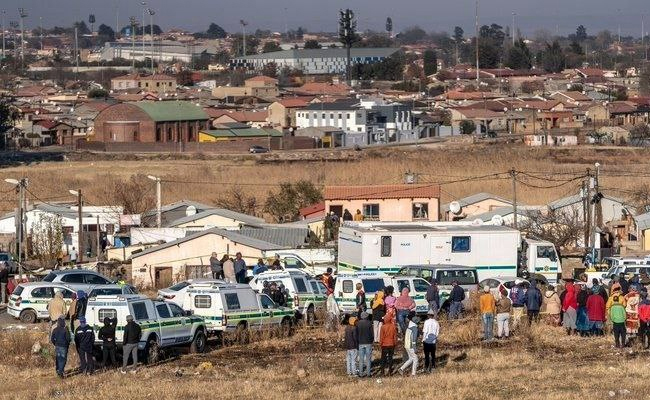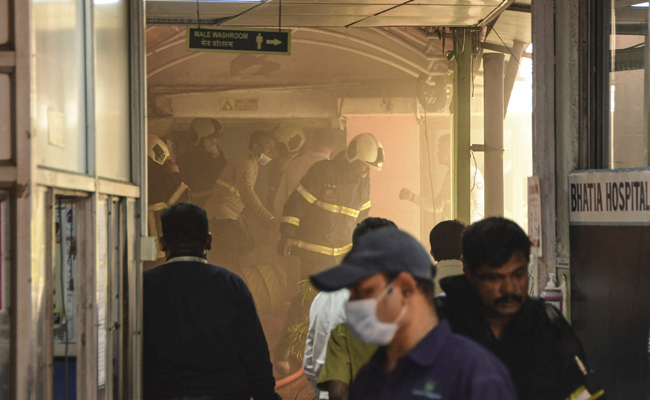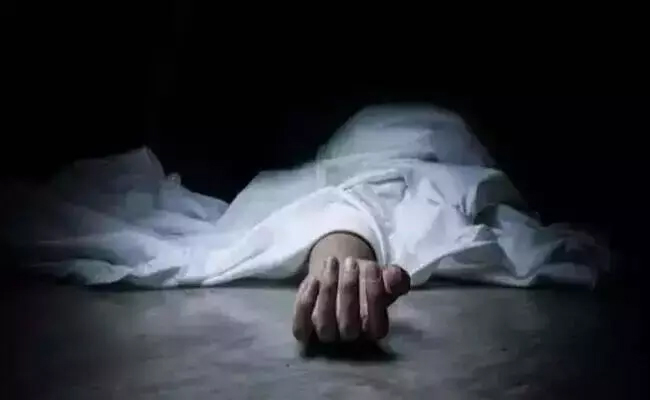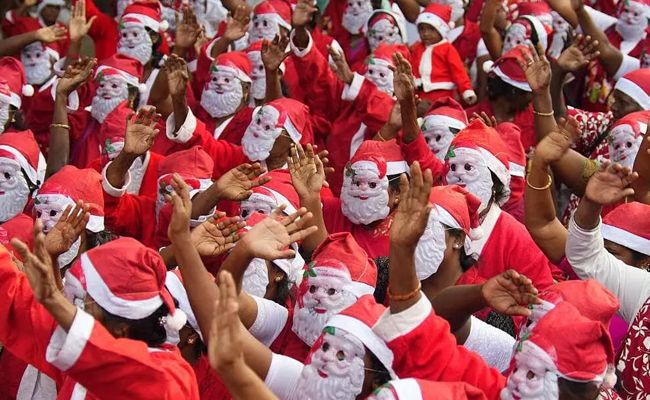New Mexico, Sep 7: Boeing's first astronaut mission ended Friday night with an empty capsule landing and two test pilots still in space, left behind until next year because NASA judged their return too risky.
Six hours after departing the International Space Station, Starliner parachuted into New Mexico's White Sands Missile Range, descending on autopilot through the desert darkness.
It was an uneventful close to a drama that began with the June launch of Boeing's long-delayed crew debut and quickly escalated into a dragged-out cliffhanger of a mission stricken by thruster failures and helium leaks. For months, Butch Wilmore and Suni Williams' return was in question as engineers struggled to understand the capsule's problems.
Boeing insisted after extensive testing that Starliner was safe to bring the two home, but NASA disagreed and booked a flight with SpaceX instead. Their SpaceX ride won't launch until the end of this month, which means they'll be up there until February — more than eight months after blasting off on what should have been a quick trip.
Wilmore and Williams should have flown Starliner back to Earth by mid-June, a week after launching in it. But their ride to the space station was marred by the cascade of thruster trouble and helium loss, and NASA ultimately decided it was too risky to return them on Starliner.
So with fresh software updates, the fully automated capsule left with their empty seats and blue spacesuits along with some old station equipment.
“She's on her way home,” Williams radioed as the white and blue-trimmed capsule undocked from the space station 260 miles (420 kilometers) over China and disappeared into the black void.
Williams stayed up late to see how everything turned out. “A good landing, pretty awesome,” said Boeing's Mission Control.
Cameras on the space station and a pair of NASA planes caught the capsule as a white streak coming in for the touchdown, which drew cheer.
There were some snags during reentry, including more thruster issues, but Starliner made a “bull's-eye landing,” said NASA's commercial crew program manager Steve Stich.
Even with the safe return, “I think we made the right decision not to have Butch and Suni on board,” Stich said at a news conference early Saturday. “All of us feel happy about the successful landing. But then there's a piece of us, all of us, that we wish it would have been the way we had planned it.”
Boeing did not participate in the Houston news briefing. But two of the company's top space and defense officials, Ted Colbert and Kay Sears, told employees in a note that they backed NASA's ruling.
"While this may not have been how we originally envisioned the test flight concluding, we support NASA's decision for Starliner and are proud of how our team and spacecraft performed," the executives wrote.
Starliner's crew demo capped a journey filled with delays and setbacks. After the space shuttles retired more than a decade ago, NASA hired Boeing and SpaceX for orbital taxi service. Boeing ran into so many problems on its first test flight with no one aboard in 2019 that it had to repeat it. The 2022 do-over uncovered even more flaws and the repair bill topped $1 billion.
SpaceX's crew ferry flight later this month will be its 10th for NASA since 2020. The Dragon capsule will launch on the half-year expedition with only two astronauts since two seats are reserved for Wilmore and Williams for the return leg.
As veteran astronauts and retired Navy captains, Wilmore and Williams anticipated hurdles on the test flight. They've kept busy in space, helping with repairs and experiments. The two are now full-time station crew members along with the seven others on board.
Even before the pair launched on June 5 from Cape Canaveral, Florida, Starliner's propulsion system was leaking helium. The leak was small and thought to be isolated, but four more cropped up after liftoff. Then five thrusters failed. Although four of the thrusters were recovered, it gave NASA pause as to whether more malfunctions might hamper the capsule's descent from orbit.
Boeing conducted numerous thruster tests in space and on the ground over the summer, and was convinced its spacecraft could safely bring the astronauts back. But NASA could not get comfortable with the thruster situation and went with SpaceX.
Flight controllers conducted more test firings of the capsule's thrusters following undocking; one failed to ignite. Engineers suspect the more the thrusters are fired, the hotter they become, causing protective seals to swell and obstruct the flow of propellant. They won't be able to examine any of the parts; the section holding the thrusters was ditched just before reentry.
Starliner will be transported in a couple weeks back to NASA's Kennedy Space Center, where the analyses will unfold.
NASA officials stressed that the space agency remains committed to having two competing U.S. companies transporting astronauts. The goal is for SpaceX and Boeing to take turns launching crews — one a year per company — until the space station is abandoned in 2030 right before its fiery reentry. That doesn't give Boeing much time to catch up, but the company intends to push forward with Starliner, according to NASA.
Stich said post-landing it's too early to know when the next Starliner flight with astronauts might occur.
“It will take a little time to determine the path forward," he said.
Let the Truth be known. If you read VB and like VB, please be a VB Supporter and Help us deliver the Truth to one and all.
Johannesburg (AP): A 32-year-old suspect has been arrested in connection with a mass shooting which claimed the lives of 12 people including three children at an unlicensed pub earlier this month, South African police said on Monday.
The man is suspected of being one of the three people who opened fire on patrons in a pub at Saulsville township, west of South Africa's capital Pretoria, killing 12 people including three children aged 3, 12 and 16.
At least 13 people were also injured during the attack, whose motive remains unknown.
According to the police, the suspect was arrested on Sunday while traveling to Botlokwa in Limpopo province, more than 340 km from where the mass shooting took place on Dec 6.
An unlicensed firearm believed to have been used during the attack was recovered from the suspect's vehicle.
“The 32-year-old suspect was intercepted by Limpopo Tracking Team on the R101 Road in Westenburg precinct. During the arrest, the team recovered an unlicensed firearm, a hand gun, believed to have been used in the commission of the multiple murders. The firearm will be taken to the Forensic Science Laboratory for ballistic analysis,” police said in statement.
The suspect was arrested on the same day that another mass shooting at a pub took place in the Bekkersdal township, west of Johannesburg, in which nine people were killed and 10 wounded when unknown gunmen opened fire on patrons.
Police have since launched a search for the suspects.
South Africa has one of the highest homicide rates in the world and recorded more than 26,000 homicides in 2024 — an average of more than 70 a day. Firearms are by far the leading cause of death in homicides.
The country of 62 million people has relatively strict gun ownership laws, but many killings are committed with illegal guns, according to authorities.
According to police, mass shootings at unlicensed bars are becoming a serious problem. Police shut down more than 11,000 illegal taverns between April and September this year and arrested more than 18,000 people for involvement in illegal liquor sales.

